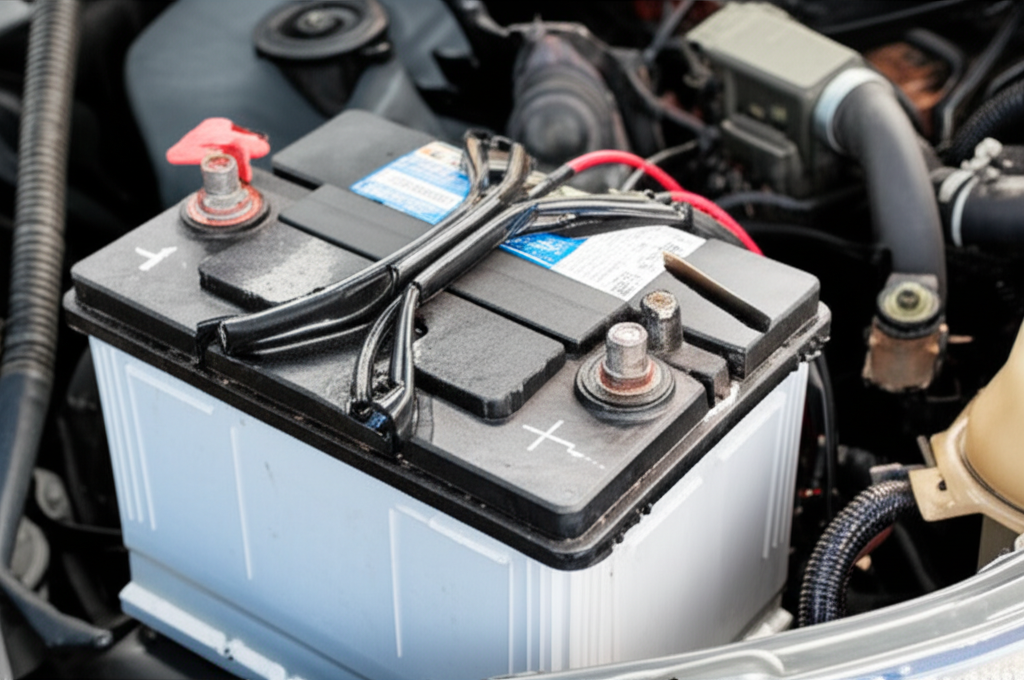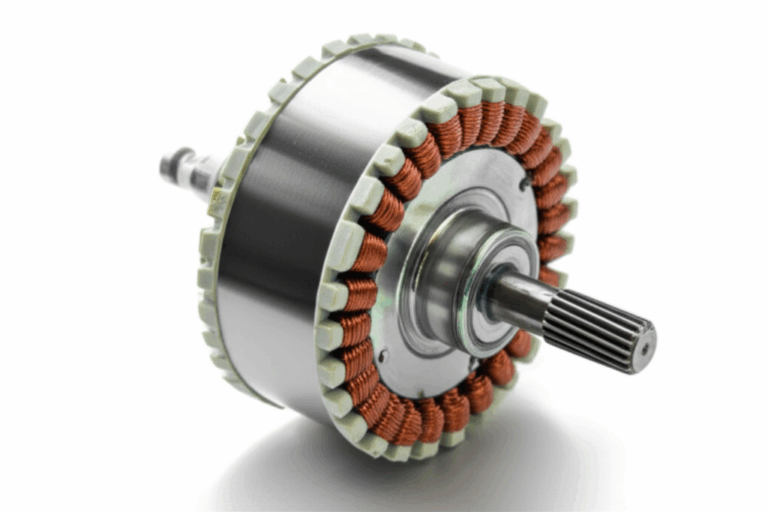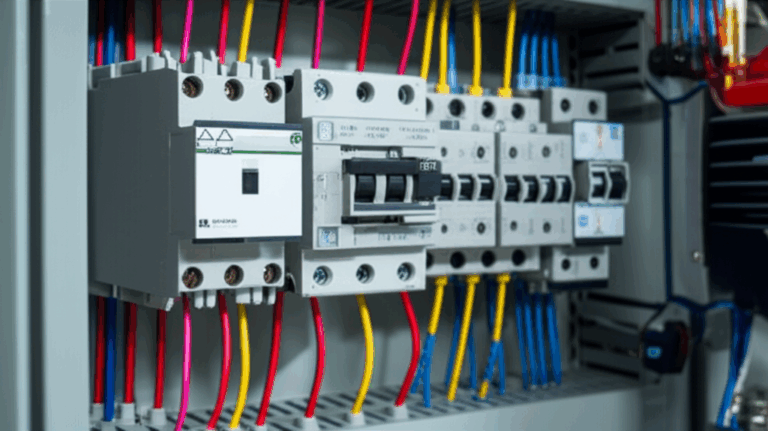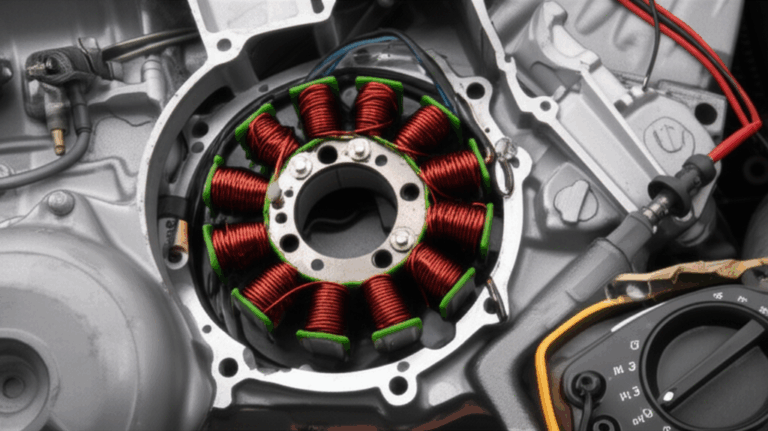
Can a Bad Stator Drain a Battery? The Definitive Guide to Symptoms, Diagnosis, and Fixes
Table of Contents
- The Short Answer
- How the Charging System Works: Stator, Regulator/Rectifier, and Battery
- How the Stator Generates Power
- What the Regulator/Rectifier Does
- Why the Battery Needs a Constant Charge
- How a Bad Stator Drains a Battery
- What I Noticed First: Real-World Symptoms of a Failing Stator
- DIY: How I Test a Stator for Battery Drain
- Pre-Test Checks
- Tools I Use
- Step 1: Battery Voltage Check
- Step 2: Charging System Output at the Battery
- Step 3: Stator AC Output Test
- Step 4: Stator Resistance and Ground Test
- How I Read the Results
- Don’t Guess—Distinguish the Culprit
- Bad Battery vs Bad Stator
- Faulty Regulator/Rectifier
- Parasitic Draw With the Ignition Off
- Cars and Alternators vs Motorcycles and Permanent Magnet Stators
- What Happens If You Ignore a Bad Stator
- Repair and Replacement Options
- When to Replace
- DIY vs Pro
- Costs and Parts Quality
- OEM vs Aftermarket
- Quick Answers to Common Questions
- Final Thoughts
The Short Answer
Yes. A bad stator can absolutely drain a battery. I learned that the hard way the first time a customer’s motorcycle kept coming back with a dead battery after a weekend ride. The battery tested fine on the bench. The starter spun strong with a jump. The problem hid inside the charging system. Once I tested the stator and saw weak AC voltage on two phases and a short to ground on the third, the light bulb went on. The stator wasn’t charging the battery while the engine ran. The bike kept running off the battery until it couldn’t anymore. Classic stator failure.
How the Charging System Works: Stator, Regulator/Rectifier, and Battery
How the Stator Generates Power
In most motorcycles, ATVs, and many small engines, the engine spins a flywheel with permanent magnets around a stationary set of coils called the stator. That setup is a permanent magnet generator. The moving magnets induce AC voltage in the stator windings. Higher RPM equals higher AC voltage and current capability. No brushes. No field current. Simple and reliable when it’s healthy.
What the Regulator/Rectifier Does
The regulator/rectifier (RR) takes the AC from the stator and turns it into DC. It also regulates the voltage so the battery and electronics see a safe level. On most bikes it targets somewhere around 13.5 to 14.8 volts at the battery when the engine runs. If the RR fails you can see undercharging or overcharging. Undercharging drains the battery. Overcharging cooks it and can fry bulbs or electronics.
Why the Battery Needs a Constant Charge
You use the battery to start the engine. After that the charging system should keep up with the electrical load and recharge what you spent on the start. If the stator or RR fails the battery discharges while you ride. Headlights dim. The fuel pump and ignition struggle. The engine misfires or stalls. Then the battery dies and strands you.
How a Bad Stator Drains a Battery
I’ve seen three flavors of stator failure cause battery drain:
- Insufficient power generation. One phase weakens or the AC output drops at idle and low RPM. The battery discharges in slow traffic or on short trips.
- No power generation. All phases flatline. The bike runs off the battery until it quits.
- Short to ground. The stator windings chafe or burn through the insulation. You get low or uneven AC voltage and lots of heat. Sometimes you smell burnt varnish.
That kicks off a nasty cycle. The battery provides power because the stator doesn’t. The RR has nothing useful to regulate. You keep riding. The battery runs down. Voltage drops. Electronics falter. The engine stalls. If you restart with a jump you repeat the same cycle and damage the battery further.
What I Noticed First: Real-World Symptoms of a Failing Stator
Here’s what I look for when I suspect stator failure. These match what riders tell me every week.
- Persistent battery drain or a dead battery after rides.
- Difficulty starting. The engine cranks slowly or not at all.
- Dimming or flickering headlights. Especially when stopped at lights.
- Battery light on the dashboard if your bike or car has one.
- Engine sputtering or stalling at low voltage.
- Weak or intermittent spark. Misfires at higher RPMs.
- Burnt stator smell. Sometimes you catch a whiff near the engine side cover.
- Abnormal rattling sounds from a loose flywheel or stator plate. Rare, still worth noting.
- Repeated battery failure even after you install a new battery.
- Voltage drop under load. Accessories drag the system down fast.
Some folks ask about car alternators. Cars use an alternator that has a rotor with field windings and a stator too. Similar idea but a different design. Alternator diode failure can mimic stator issues and it can cause an overnight parasitic draw as well. I’ll cover that later.
DIY: How I Test a Stator for Battery Drain
You can test most systems in your driveway with a decent multimeter. I’ll walk you through the same steps I use at the bench. I keep it simple because simple finds most faults fast.
Pre-Test Checks
- Inspect the battery terminals. Clean corrosion with baking soda and water. Tighten loose clamps.
- Look over the wiring harness for rubbed insulation, burnt connectors, or broken clips.
- Check fuses and relays. Replace blown fuses and test suspect relays that could be sticking and causing drain.
- Confirm the ground strap from battery negative to chassis or engine case stays clean and tight.
Tools I Use
- Multimeter that reads DC voltage, AC voltage, and resistance.
- Amp clamp meter for charging current checks and key-off draw.
- Test light for quick parasitic draw checks.
- Service manual specs for your exact model.
Step 1: Battery Voltage Check
- Engine off. Measure across the battery posts. A fully charged lead-acid battery reads about 12.6 to 12.8 volts open circuit. AGM sits similar. Lithium iron phosphate reads higher when full.
- If you see 12.2 volts or lower the battery sits partially discharged.
- Load test if you can. I use a load tester or a shop tool. You can also watch cranking voltage. Healthy batteries stay above roughly 10 volts during crank. If it plunges lower the battery might be weak even if your stator is fine.
Step 2: Charging System Output at the Battery
- Start the engine and let it idle. Turn off extra accessories.
- Measure DC voltage at the battery. Most systems should reach 13.5 to 14.8 volts as you bring the RPM up. At idle some bikes sit a hair lower.
- If you see 12.8 volts or less at moderate RPM the charging system is failing. Either the stator isn’t producing enough AC, the RR isn’t rectifying or regulating, or the wiring has a major voltage drop.
Step 3: Stator AC Output Test
- Shut the engine off. Unplug the stator connector from the RR. On a three-phase stator you’ll see three same-color wires. On a single-phase unit you’ll see two.
- Set the meter to AC volts. Start the engine. Measure AC voltage between each pair of stator wires on a three-phase system. Measure across the two wires if single-phase.
- Rev to about 3,000–4,000 RPM. You should see a rising AC voltage with RPM. Many bikes show 20–70 VAC per phase depending on design. Check your service manual for exact specs.
- Compare the phases. They should be consistent. If phase A reads 40 VAC while phase B reads 20 VAC you likely have a problem in that weaker winding.
- If you get little or no AC voltage the stator has failed or the flywheel magnets got weak or damaged.
Step 4: Stator Resistance and Ground Test
- Engine off. Key off. Unplug the stator from the RR.
- Set the meter to ohms. Measure resistance between the stator leads. Three-phase stators should show low and equal resistance between each pair. You can see ranges in tenths of an ohm. The service manual lists the target values.
- Test for shorts to ground. Put one meter lead on a stator wire. Put the other lead on the engine case. You should read open circuit or infinite resistance. Any continuity to ground means a shorted winding or damaged insulation.
How I Read the Results
- Low DC voltage at the battery with normal AC output points to a bad RR or a wiring issue.
- Low or mismatched AC output across phases points to a failing stator.
- A short to ground on any stator lead confirms stator failure.
- Good charging voltage at the battery with a battery that still dies overnight points to a parasitic draw not a stator output issue.
If your bike has a permanent magnet alternator the stator test focuses on AC voltage and continuity. If your car has a conventional alternator you will test alternator output current, ripple, and diode integrity.
Don’t Guess—Distinguish the Culprit
Bad Battery vs Bad Stator
I never skip a battery load test. A dead or sulfated battery can mimic charging problems. Here’s my quick stack:
- Open circuit voltage test. Healthy charged lead-acid shows about 12.6–12.8 V. Lithium and gel vary by chemistry. AGM behaves like lead-acid with lower self-discharge.
- Load test for battery. Many parts stores do this free. You can use a tester at home. Some multimeters have a battery test mode.
- Battery voltage drop under load. Crank the engine and watch voltage. Droops below 10 V can point to a weak battery or high resistance in the starter circuit. Check starter motor draw if needed.
Faulty Regulator/Rectifier
A bad RR can drain a battery two ways. It can undercharge while you ride. It can also leak current backward when the bike sits if a rectifier diode fails. How I check it:
- With the stator unplugged measure the DC voltage at the battery while running. If it’s still low the RR isn’t doing its job or the wiring has a major drop.
- Perform a rectifier diode test with a multimeter’s diode mode. Check forward and reverse bias according to your service manual. Any shorted diode invites parasitic draw and low charging.
- Watch for overcharging. If you see 15.5 V or higher at the battery while revving you risk boiling a lead-acid battery. Overcharging points to a bad regulator.
Parasitic Draw With the Ignition Off
People ask me why their battery drains when the ignition is off. That’s a parasitic draw. It can come from alarms, accessories, stuck relays, or a failed RR diode. Here’s my routine:
- Key off. Connect an amp clamp meter to the battery negative cable or put the multimeter in series on the low-amp range. Let the modules go to sleep. That can take several minutes on cars.
- Typical key off current draw should be low. On a simple bike you should see a few milliamps if anything at all. On cars you can see higher but still modest values. Check your manual.
- Pull fuses one by one while watching the draw. When the draw drops you found the circuit.
- Use a test light across the fuse to see current flow at a glance on simple systems.
Cars and Alternators vs Motorcycles and Permanent Magnet Stators
Cars use an alternator with a rotor and brushes or slip rings unless it’s a brushless design. The rotor magnetizes with field current. The stator surrounds it. Inside you have a diode rectifier and sometimes a built-in regulator. Failure modes:
- Alternator diode rectifier failure. Causes charging problems and an overnight parasitic drain. A bad diode also shows as high AC ripple on the DC system.
- Voltage ripple testing. Set your meter to AC and measure at the battery with the engine running. Ripple should be low. High ripple points to bad diodes or stator windings.
- Alternator output current tests. A clamp meter helps. Compare against spec with loads on.
Motorcycles often use a permanent magnet generator that feeds an external RR. The stator lives in oil and sees heat. Overheating and oil contamination can degrade the windings. Weak flywheel magnets also reduce output though that’s less common.
What Happens If You Ignore a Bad Stator
I’ve watched owners go through multiple batteries because the stator kept them undercharged. Batteries hate deep discharge. You shorten their life each time you ride on a weak charging system. You also risk:
- Stranding. A jump start gets you home once or twice. It won’t fix an open stator coil or a short to ground.
- Safety risks. Lose lights at night and things get dicey. Fuel pumps and ignition modules fail to keep up at low voltage.
- Collateral damage. A struggling RR runs hot. Connectors melt. Wires discolor. Overcharging from a bad regulator can cook an AGM or boil a lead-acid battery dry.
Repair and Replacement Options
When to Replace
Replace the stator when you have:
- No AC output on one or more phases at the proper RPM.
- A stator short to ground.
- Severely uneven phase voltage.
- Visible burnt windings or a strong burnt varnish smell.
DIY vs Pro
If you’re comfortable with basic electrical tests and you have a service manual you can diagnose this at home. Replacement varies by model. Some bikes require pulling a side cover and resealing it with a gasket or sealant. Others hide the stator deep and need more teardown. If you need to remove the flywheel you’ll want the correct puller and torque specs. I handle most with hand tools and patience. I send out the odd job when the engine has to come apart.
Costs and Parts Quality
Prices vary. Stators range from budget aftermarket units to premium OEM. Add a gasket and maybe an RR if yours runs suspect. Labor takes one to three hours for many bikes. Cars use alternators which you often replace as a unit.
Quality matters in the core. The stator and rotor rely on laminated electrical steel to reduce eddy current losses and heat. Better materials and tighter tolerances improve efficiency and durability. If you want to understand how the iron stack affects performance read up on stator core lamination, rotor core lamination, and why high-grade electrical steel laminations keep losses down. For a broader view across machines this primer on motor core laminations explains the role of the lamination stack in everything from motors to generators.
OEM vs Aftermarket
I’ve installed both. OEM stators tend to fit and last. Aftermarket can save money and sometimes improve output. I look for:
- Correct resistance and output specs.
- High-temperature magnet wire and solid epoxy potting or varnish.
- Clean connectors that match the harness.
- A warranty that means something.
Quick Answers to Common Questions
- Can a bad stator drain a battery while the bike sits?
Usually no. The stator is passive when the engine is off. A parasitic draw with the key off comes from stuck relays, alarms, modules, or a failed RR diode. Test key off current draw to confirm.
- Can a bad regulator/rectifier drain a battery?
Yes. A shorted rectifier diode can leak current to ground with the ignition off. It also undercharges while riding. Run a rectifier diode test and a charging voltage check.
- What drains a battery overnight?
Parasitic draw from add-on accessories, alarms, stuck relays, glove box lights, trunk lights, or a leaky RR diode. Use a test light or amp clamp meter and pull fuses to isolate the circuit.
- What are stator failure symptoms?
Dimming lights, battery light on, weak spark, engine sputtering, stalling, repeated battery failure, burnt stator smell, and low charging voltage at the battery.
- How do I test a stator for battery drain?
Check battery DC voltage while running. If low, unplug the RR and measure the stator’s AC voltage between each pair of wires. Compare phases. Then measure resistance between windings and check for shorts to ground. Use the service manual for your model’s stator resistance values and stator output voltage specification.
- What’s a normal charging voltage at the battery?
About 13.5–14.8 V DC with the engine running and the system healthy. Lower points to undercharging. Higher points to overcharging.
- What is an open circuit stator test?
That’s the ohms check between stator leads with the stator unplugged. It looks for open windings and compares resistance between phases. You also perform a ground fault detection test by checking resistance from each stator lead to the engine case.
- Can I ride with a bad stator?
You can limp along on the battery for a short time if the stator is weak not dead. I don’t recommend it. You risk a stall and you can kill a good battery. I carry a jump starter for emergencies but I fix the root cause as soon as I confirm it.
- How long does a stator last?
Many last the life of the bike. Heat and oil contamination shorten life. Overloaded electrical accessories and chronic high temperatures cook windings. A cooked stator often shows darkened coils and a burnt smell.
- What’s the difference between alternator vs stator?
A motorcycle stator is part of a permanent magnet alternator that generates AC without a field coil. A car alternator uses a rotor with field windings and a stator plus a rectifier. You test bikes with AC output checks and resistance checks. You test cars with output current, voltage regulation, and ripple.
- What about low voltage output due to weak magnets?
Rare but real. If the flywheel magnets weaken or delaminate you’ll see low AC output even with good windings. Compare against spec and inspect the flywheel.
- How do temperature and weather affect batteries?
Cold weather battery performance drops. Starting gets harder and batteries show higher internal resistance. Hot weather battery life shortens due to plate corrosion and fluid loss. A marginal charging system fails faster in heat or cold.
- What about AGM, gel, and lithium batteries?
AGM and gel tolerate vibration better than flooded lead-acid. Lithium crank strong with less weight. They need proper voltage control. Overcharging a lithium battery can be dangerous. Always match the RR and charger to the battery chemistry. Use a battery tender designed for your battery type.
- Do wiring issues mimic stator failure?
Absolutely. Corroded connectors, loose battery terminals, worn wiring harness sections, and high resistance grounds cause voltage drop. A voltage drop test across cables and connectors finds hidden losses. Clean and tighten first. Then retest.
- Can a starter motor issue feel like a bad stator?
Yes. A failing starter or high draw during crank can drag the battery down. Diagnose starting problems with a current clamp and a voltage drop test. Fix starting issues before you condemn the charging system.
- What is voltage ripple testing and why does it matter?
On car alternators excessive AC ripple at the battery means a diode or stator winding failed. On bikes with PMA systems DC ripple depends on RR performance. Ripple can cause module glitches and rough running.
- How do I check for loose or corroded battery terminals?
Look and feel. If a terminal moves it’s too loose. Clean with a wire brush and neutralize acid with baking soda. Rinse and dry. Reassemble and protect with dielectric grease. Then recheck voltage drop under load.
- What’s the acceptable voltage drop in charging cables?
Minimal. I like to see under a few tenths of a volt from the RR output to the battery under load. Big drops point to corroded connectors or damaged wires.
- Which tools help speed diagnosis?
A good multimeter. An amp clamp meter. A test light for parasitic draw. A service manual. Sometimes a scope for ripple. An infrared thermometer to spot hot connectors. These tools turn guesswork into a flow chart.
- What about engine control modules causing drain?
An ECM/ECU can draw current after shutdown while it goes to sleep. If it never sleeps you get a persistent draw. Diagnose with a key off current draw test and fuse pulls. Fix software or hardware faults as needed.
Putting It All Together: My Go-To Troubleshooting Flow
When a vehicle won’t start after sitting I do this:
1) Measure open circuit battery voltage.
2) Try a start and watch cranking voltage. Note slow cranking.
3) Start the engine and measure DC voltage at the battery. I expect 13.5–14.8 V at a fast idle.
4) If it’s low I unplug the RR and test stator AC voltage between phases. I compare outputs.
5) I check stator resistance and shorts to ground. Bad readings confirm a bad stator.
6) If the stator looks good I diode test the RR. I check wiring continuity and voltage drop.
7) If charging looks normal but the battery dies overnight I do a parasitic draw test. I isolate the circuit by pulling fuses. I consider RR diode leakage, stuck relays, and accessories.
That path catches almost every charging system problem fast. It also stops me from throwing parts at the bike.
Why Quality Matters Inside the Stator
I’ve cut open failed stators. You can see heat damage and darkened windings. You also see differences in the iron stack and winding quality. Laminations that use higher grade electrical steel run cooler. Better varnish and epoxy keep windings insulated and stable. Well made rotor and stator laminations reduce losses so more of the engine’s power goes to charging not heat. When I shop for replacements I check specs and materials because the difference shows up on the meter and on the road.
Safety Tips and Practical Advice
- Disconnect the battery before major electrical work.
- Use the right flywheel puller. Don’t pry and scar the crank or magnets.
- Replace the stator cover gasket. Clean mating surfaces and torque in sequence.
- Route the wiring harness exactly as the factory did. Avoid pinch points and hot spots.
- After repair check charging voltage at idle and 3–4k RPM. Check again with lights and accessories on.
- Keep a small jump starter in your bag if you ride far. It’s cheap insurance.
- If you run extra lighting or heated gear confirm your charging system’s output capacity. Overloading any system causes undercharging.
Conclusion: Don’t Let a Faulty Stator Leave You Stranded
I’ve seen one theme over and over. People replace the battery then they keep riding with a weak charging system. The new battery masks the problem for a week then it dies too. Test before you buy parts. A multimeter and a few simple checks tell you if the stator, the regulator/rectifier, or a parasitic draw is to blame. When you catch a bad stator early you save your battery, your time, and your ride.
Recap:
- A bad stator can drain a battery because it fails to recharge it while you ride.
- You can diagnose it at home with AC voltage tests, ohms checks, and a DC charging test at the battery.
- Rule out the battery and RR. Check for parasitic draw with the key off.
- Replace with quality parts and pay attention to materials and build.
Take an hour to test it right. You’ll get your charging system back on track and you won’t need to push your bike home again.








